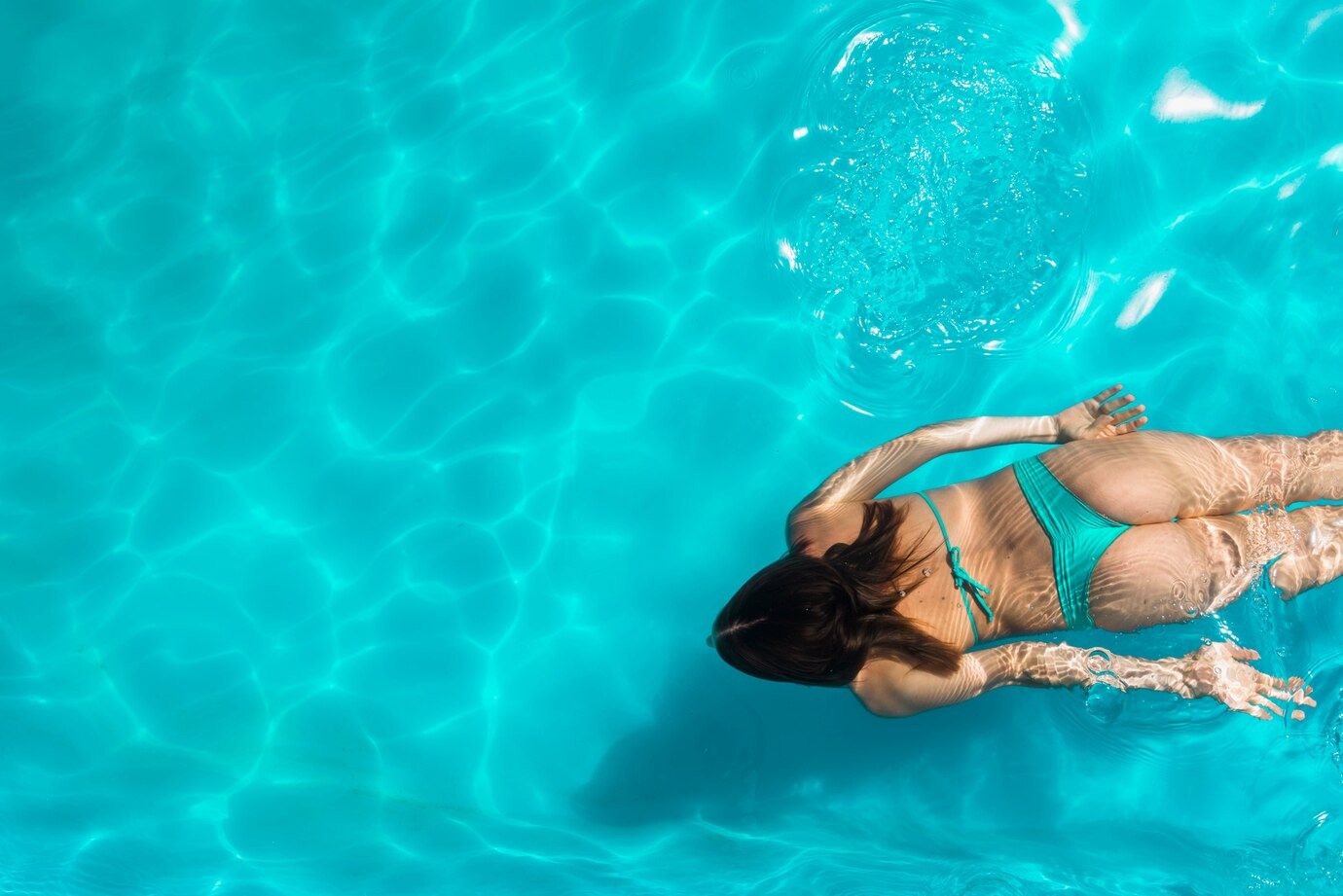
Swimming is a sport that demands not only physical strength and endurance but also technical precision and mental toughness. Advanced techniques and specialized workouts are essential for competitive swimmers looking to elevate their performance.
In this blog, we will delve into ten advanced techniques and workouts designed to enhance competitive swimming performance. Whether you’re aiming for personal bests or podium finishes, incorporating these swimming exercises into your training regimen will help you reach your goals.
Table of Contents
1. Hypoxic Training
What is Hypoxic Training?
Hypoxic training involves swimming with restricted breathing patterns to simulate low-oxygen conditions. This technique enhances the swimmer’s ability to tolerate higher levels of carbon dioxide and improves overall lung capacity.
How to Incorporate Hypoxic Training
- Start with simple patterns, such as breathing every three strokes, then gradually increase to five, seven, or even nine strokes.
- Use hypoxic sets during warm-ups or cool-downs and integrate them into main sets for added challenge.
Benefits
- Improved lung capacity and efficiency.
- Enhanced tolerance to high-intensity efforts.
- Better mental focus and control over breathing.
2. Underwater Dolphin Kicks

Source: freepik.com
What are Underwater Dolphin Kicks?
Underwater dolphin kicks are powerful kicks performed underwater after starts and turns. They utilize the core and leg muscles to generate speed.
How to Master Underwater Dolphin Kicks
- Practice with fins to build strength and technique.
- Focus on keeping the body streamlined and minimizing resistance.
- Incorporate sets dedicated to underwater kicks, such as 25-meter underwater kick repeats.
Benefits
- Increased speed off the walls.
- Enhanced core strength and stability.
- Improved overall race times, particularly in sprint events.
3. Resistance Training
What is Resistance Training?
Resistance training involves using equipment like drag suits, parachutes, or resistance bands to increase water resistance, forcing swimmers to work harder and build strength.
How to Use Resistance Training
- Use drag suits or parachutes during regular swim sets to build endurance and power.
- Incorporate resistance bands for specific drills, such as resisted sprints or stroke-specific exercises.
Benefits
- Increased muscular strength and power.
- Enhanced endurance and sprinting capability.
- Improved stroke mechanics under fatigue.
4. High-Intensity Interval Training (HIIT)

Source: freepik.com
What is HIIT?
HIIT involves short bursts of intense effort followed by brief recovery periods designed to maximize cardiovascular conditioning and anaerobic capacity.
How to Implement HIIT in Swimming
- Include sets like 10×50 meters all-out sprints with 30 seconds rest.
- Use HIIT sets in combination with other training methods for comprehensive conditioning.
Benefits
- Enhanced anaerobic and aerobic capacity.
- Improved speed and power.
- Increased ability to sustain high-intensity efforts.
5. Stroke Technique Drills
What are Stroke Technique Drills?
Stroke technique drills focus on refining specific elements of each stroke, such as hand entry, pull pattern, and kick technique.
Effective Stroke Technique Drills
- Freestyle: Catch-up drill to improve hand entry and extension.
- Backstroke: Single-arm drill to focus on rotation and pull.
- Breaststroke: Pull-buoy drill to isolate and enhance the arm movement.
- Butterfly: One-arm drill to refine the pull and timing.
Benefits
- Improved stroke efficiency and mechanics.
- Enhanced propulsion and reduced drag.
- Better overall performance in races.
6. Plyometric Exercises

Source: freepik.com
What are Plyometric Exercises?
Plyometric exercises involve explosive movements designed to increase power and speed, beneficial for starts, turns, and overall swimming speed.
Effective Plyometric Exercises for Swimmers
- Box jumps: Improve leg power and explosive strength.
- Medicine ball throws: Enhance upper body power.
- Burpees: Develop overall explosive strength and endurance.
Benefits
- Increased power and explosiveness.
- Improved start and turn performance.
- Enhanced overall athleticism and conditioning.
7. Tapering Strategies
What is Tapering?
Tapering involves reducing training volume and intensity before a major competition, allowing the body to recover and perform optimally.
Effective Tapering Strategies
- Gradually decrease volume while maintaining intensity.
- Focus on quality over quantity in the weeks leading up to the competition.
- Incorporate rest and recovery techniques, such as stretching and massage.
Benefits
- Enhanced performance during key competitions.
- Reduced risk of overtraining and injury.
- Improved mental focus and readiness.
8. Open Water Training

Source: freepik.com
What is Open Water Training?
Open water training involves swimming in natural bodies of water, such as lakes, rivers, or oceans, to simulate race conditions and improve adaptability.
How to Incorporate Open Water Training
- Schedule regular open water swims to practice sighting, navigation, and dealing with environmental factors.
- Combine open water sessions with pool training to maintain stroke technique and fitness.
Benefits
- Improved race-specific skills and adaptability.
- Enhanced mental toughness and confidence.
- Better performance in open water races.
9. Strength Training
What is Strength Training?
Strength training involves weightlifting and bodyweight exercises to build overall muscular strength and endurance.
Effective Strength Training Exercises for Swimmers
- Squats: Enhance leg strength and power.
- Pull-ups: Improve upper body strength and pull mechanics.
- Core exercises: Strengthen the core for better stability and body position.
Benefits
- Increased muscular strength and endurance.
- Improved stroke power and efficiency.
- Enhanced overall performance and injury prevention.
10. Mental Training
What is Mental Training?
Mental training involves techniques to improve focus, confidence, and mental resilience, crucial for peak performance in competitive swimming.
Effective Mental Training Techniques
- Visualization: Practice visualizing race scenarios and successful performances.
- Goal setting: Set specific, measurable, achievable, relevant, and time-bound (SMART) goals.
- Mindfulness and relaxation: Use techniques such as deep breathing and meditation to reduce stress and improve focus.
Benefits
- Enhanced mental toughness and resilience.
- Improved focus and concentration during races.
- Better overall performance and enjoyment of the sport.
Conclusion
Incorporating advanced techniques and workouts into your training regimen is essential for competitive swimmers aiming to elevate their performance. From hypoxic training and underwater dolphin kicks to resistance training and mental conditioning, these swimming exercises provide a comprehensive approach to improving speed, strength, endurance, and mental resilience.
By dedicating time and effort to mastering these techniques, competitive swimmers can achieve their goals and excel in the pool. Whether you’re a seasoned athlete or an aspiring champion, these advanced strategies will help you swim faster, stronger, and more efficiently. Dive in and embrace the challenge of becoming the best swimmer you can be!







